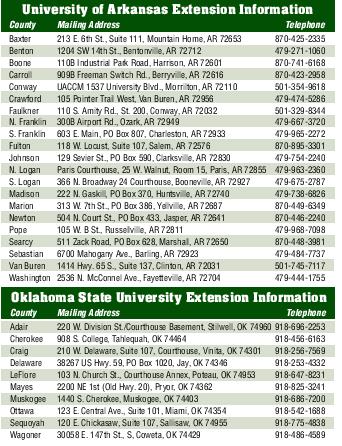A problem cow can be trouble in a herd. Whether it's due to a bad disposition, undesirable physical traits or breeding difficulties, she can cost a rancher time and money. But when to get rid of her, and how?
University of Missouri Extension livestock specialist Dona Funk said producers should check the herd at least once a year as calves are weaned, and in many cases problem cows should be removed at that point.
"Disposition is something that they can pass on to their offspring," she pointed out. "Bad feet, bad legs, a bad udder are something that you really want to look at, and especially the bad udder—if you think about that, that's where the calf gets its nutrition." If the cows aren't producing offspring, she points out, the rancher isn't making any money.
Much of this information is available through an animal's Estimated Progeny Differences. For instance, Funk said some breed associations have developed EPD's that show whether heifers out of an animal are likely to get pregnant easily. There are also EPD's on herd stayability.
"If it's staying in the herd," she said, "it means it's a sound animal, usually, that will breed back and is doing a good job raising a calf."
Brett Barham, Assistant Professor in Breeding Genetics for University of Arkansas Extension, said a producer can also use EPD's to select for better temperaments. "Limousin has a 'docility score' EPD," he said. "Salers also have that." The disposition of cattle can be particularly important for a producer with limited resources.
"When you just have one or two people working cattle," he said, "sometimes it is more difficult to work cattle that are excitable, and sometimes even more dangerous to do that. And especially, once a producer starts getting up there to the age where they might not be able to have the mobility to get out of the way of an animal that's upset, then that definitely does become important."
And worst of all, it's contagious: "One unruly animal tends to get everybody else stirred up."
Along with disposition, Barham said reproductive issues are most important in deciding what to do with a problem cow. "I'm typically of the mindset," he said, "that if a cow fails to breed back, then she needs to probably be sold." He explained with the high cost of production, it would take 2 to 3 years to pay off the cost of giving an open cow another chance to breed.
"So financially," he said, "it's better to cull an open female, and replace her with a bred female of some sort."
What if the problem cow is already bred? Funk said that decision depends on both the animal and the problem. For instance, there are new rules that prohibit ranchers from selling cattle with cancer eye at the sale barn; that's not an issue with offspring, and many producers are keeping the animals on the farm until they perish.
"But," she said, "most people are not keeping problem animals; they're getting rid of them, which is helping our herd increase in quality quite a bit over the last few years."
Funk said that selection is taking place "almost on its own… Ones that are hard breeders, they don't breed back every year—they pretty much cull themselves. And so, we've been selecting for a higher performance animal, and you can kind of see that in our pregnancy rates in the herds, our amount of meat we're producing—we're producing a lot more meat with a lot fewer cattle right now."
A third issue that could decide whether a cow stays in the herd is structural correctness—as Barham described it, "How they walk, how their skeleton is set up." A flawed animal, he said, will typically break down before the end of her usual productive life. Udder problems also fall under that category, and Barham said a cow that starts to develop udder problems should probably be culled at the next opportunity.
"If she's got a calf now," he said, "you can wean the calf off of her and cull her, because that problem's not going to get any better. It's always going to continue to get worse, and at some point you might even have to find a foster mother for her calf."
But Funk said you can be judicious. "If she's got bad feet and she can't get to the feed bunk," she said, "that's something that you just definitely need to go ahead and get rid of her." But if the problem is solved by trimming the cow's feet every couple of years, "maybe it's better to go ahead and keep her. There is some gray area there, and producers should have to realize and figure out how much this problem is costing them."






